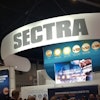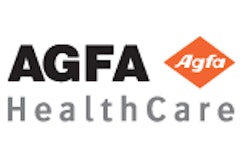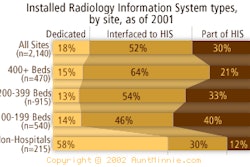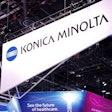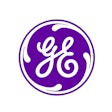For several years, a handful of universities and nighthawk companies have quietly outsourced their night-call work to international locales in Australia, France, and even India. But a new program being launched by Massachusetts General Hospital to outsource primary reads to radiologists in India has drawn criticism from radiologists worried about the impact of such programs on the U.S. job market.
By providing primary interpretation of images by both U.S.- and India-trained radiologists based in Bangalore, MGH’s plan goes beyond the wet-read night-call coverage practiced by most others. But the Boston hospital maintains that it is not designed to shortcut legalities and licensure, or undercut professional standards and salaries -- as some participants on the AuntMinnie.com Residents’ Digital Community Discussion Group have suggested.
Indeed, a review of the MGH plan, as well as the overseas operations of a handful of other sites, demonstrates that criticism of the plan -- sparked by an article published January 15, 2003 in India New England News and posted on the MGH Web site -- may be based more on fear than on fact.
At a time when radiology manpower is at an all-time low and imaging volume is at an all-time high, MGH is just one of several sites seeking to export work to regions where time-zone differences extend the virtual workday.
Case Western Reserve/University Hospitals of Cleveland has had a link to Sydney, Australia, in place for more than a year, providing night-call coverage for its own facilities and marketing the service to others. Yale University of New Haven, CT, has tested the concept of primary interpretation based on compressed, transmitted images read by a U.S.-trained radiologist in Bangalore, India. In addition, at least two commercial companies have built a brisk business providing night-call coverage from overseas, with readers in Sydney and Paris.
But as might be expected from a facility that has been called "Man’s Greatest Hospital," the MGH plan is more ambitious than the other ventures. By supporting real-time primary interpretation of complex inpatient cases, the technical infrastructure of the MGH network is more robust. And its long-term goals -- to increase productivity and utilization of its Boston flagship hospital in an environment that raises radiology’s profile in India through research and educational partnerships -- are bolder.
"The core mission of our hospital is patient care, teaching, and research," said Dr. Sanjay Saini, chief of CT at MGH. "Doing this is going to solve our own problem, but it also ties in with our overall mission. And if it also allows us to improve the way we deliver healthcare, either here or elsewhere, then it’s simply the right thing to do."
Bangalore bound
The plan arose as part of a major effort to make the MGH radiology department more productive, make the most of existing resources, and contribute to the hospital’s mandate to decrease patient length-of-stay.
In addition to expanding scanning hours and empowering technologists with increased operational responsibilities, MGH also adopted a policy of "in by 12, out by 5." The policy, intended to encourage referrers to forward imaging requests early in the day, ensures that reports on inpatients are available by rounds the next day.
But with scanners running until 8 p.m. weekdays and all day on weekends, many imaging studies were still falling through the cracks during off-hours, delaying patient management. Enter teleradiology overseas.
With the aid of healthcare information networking company Wipro GE Medical Systems of New Delhi, and with the Manipal Academy of Higher Education (MAHE) in Manipal, India, MGH set up a teleradiology center in Bangalore to manage imaging overflow. The plan takes advantage of time-zone differences so that night-call in Boston is day work in India. Saini took the network for a test drive during a visit in December.
"When physician teams began their rounds at 8 a.m., the late-evening CT reports were available," he said. "Since inpatients are more likely to have significant findings, more timely reporting of these results is good for patient care. And it also helps with the hospital’s imperative for capacity utilization."
The center will be initially staffed by U.S.-trained subspecialty radiologists willing to relocate to India, Saini said. A long-term goal is to identify promising radiologists undergoing training at MAHE, who will travel to MGH for an intensive, two-year training program. They would then return to what Saini envisions will ultimately be a full-fledged radiology department not unlike the Boston-based facility, he said.
Unlike other nighthawk operations where radiologists essentially work in a vacuum, reading emergent scans and offering preliminary interpretations, MGH radiologists in Bangalore will provide primary reads and also participate in research and education through the partnership with MAHE.
Recruitment is underway for a board-certified radiologist to direct the new center. The position will be an academic appointment through MAHE with co-appointment at MGH, Saini said.
Of the Indian radiologists who will be recruited to travel to the U.S. for advanced training at MGH, Saini said, "We’re not just going to train people for two years and then forget about them. We want to have co-appointments with MAHE so that every year, radiologists can return for one or two months and spend time here."
The collaboration between the two universities may ultimately boost the quality of patient care in India by introducing the concept of radiology subspecialization, he said.
"This is not just working as a radiologist in a different location," Saini said. "It’s an opportunity to do something that has never been done before. The general trend in radiology is to develop subspecialty competence, even in private practice. Subspecialty teams are not as widely available in India as they are here, so it’s an opportunity to raise the profile of radiology within India as well."
Robust network
Aside from these aims, what sets the MGH plan apart is its technical underpinnings. Wipro has designed an image management system that uses the same PACS network (Agfa HealthCare, Greenville, SC) as the one in place at MGH in Boston.
While other night-call services employ a manual push system -- whereby U.S.-based staff transmit compressed images for overnight reading with selected patient history, to be downloaded by the international reader -- radiologists at the Bangalore center use a full-fidelity PACS. They can access the MGH network and pull up a worklist, just as if they were sitting down at a workstation in Boston.
"I’m able to list all the unread abdominal CTs, for example, just as I would here," Saini said. "I can access old reports and studies, and not just CTs but MRIs and ultrasounds, as well as the hospital medical record, if I need more information about a surgery or endoscopy. And I have access to our paging system, so if there is a question or a finding to alert someone about, I can do that as well."
Critical claims
When news of the MGH plan first surfaced, anonymous critics on the AuntMinnie.com Residents’ Digital Community Discussion Groups lambasted it as illegal, unethical, and potentially fraudulent.
Many viewed the concept of exporting images to overseas-based radiologists as threatening to the profession. Others derided the plan as an attempt to drive down costs and radiologists’ salaries by creating an "imaging sweatshop" in India.
While none of these critics responded to an invitation by AuntMinnie.com to discuss their concerns publicly, several of them took the opportunity to send inflammatory e-mails to Saini anonymously. Several radiologists working at other institutions on similar projects declined to be interviewed for this story.
But if the politics surrounding the issue are complex, the law, at least, is clear. When radiologists are licensed in the state for which they are providing interpretation, and are credentialled by the hospital, international reads are perfectly legal, according to Jon Berger, vice president of Nighthawk Radiology Services in Coeur d’Alene, ID, a private company with a Sydney-based satellite reading center serving clients in 37 states.
In fact, the only limitation for MGH is its inability to provide primary interpretation of cases covered by Medicare -- the insurer prevents billing of studies read outside of the U.S., Saini said. Another consideration is ensuring compliance with Health Insurance Portability and Accountability Act (HIPAA) requirements for confidentiality and patient privacy.
"Other than that, nothing about this is unique," Saini said. "We have been in the domestic teleradiology business for quite some time, with customers in New York state and Vermont, among others. We’ve gone through the process of figuring out how to deal with credentialling, licensure, and malpractice issues. It’s not new."
In response to fears that the MGH plan will drive down U.S. salaries, Saini noted that radiologists associated with the new center -- including its coordinator -- would be offered competitive, dollar-based salaries. Since U.S.-trained radiologists can work anywhere in the world, it is not possible to sustain a significant salary differential, he said.
Moreover, MGH said it has an incentive to ensure that its radiologists are well trained, well paid, and professional. Once the center is fully staffed and operational, with an established track record, the hospital plans to market its teleradiology services to other institutions in need of coverage.
"For that to work, we need to demonstrate a very high level of competence and sophistication, so that other universities and radiology groups will be comfortable sending their cases to us," he said.
By Deborah R. DakinsAuntMinnie.com contributing writer
January 23, 2003
Related Reading
Radiologists find new recruiting incentives in tight employment market, December 12, 2002
NightHawk Radiology brings overreading from Down Under, March 21, 2002
Education is the solution for on-call radiology, February 21, 2002
DeJarnette, iView form remote reading service, November 16, 2001
Copyright © 2003 AuntMinnie.com
